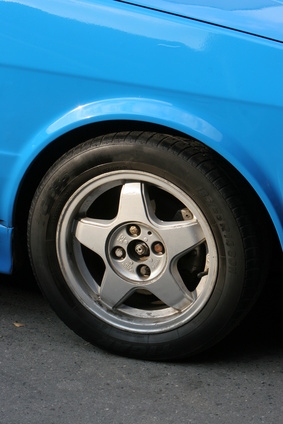
Checking tire pressure is a routine part of maintenance for automobiles. It can sometimes be confusing when the pressure increases by several psi (pounds per square inch) after driving and then decreases after being parked for a few hours.
When your car is driven, friction is produced between the tires and the road, creating heat.

Gay-Lussac's Law states that temperature increases air pressure inside a container. This means that when your tires heat up, the air pressure inside them increases.

The tire pressure recommended in your car's owner's manual is the "cold inflated pressure," meaning that this is what the pressure should be before your tires are heated.

The best time to check tire pressure is in the morning, before the tires have been heated by driving or the afternoon sun.

A general rule of thumb is that tire pressure increases by one psi for every 10 degrees Fahrenheit. Pressure will usually increase by about two psi in the afternoon, four psi from driving at speeds lower than 45 mph, and even more at higher speeds or with extended driving.